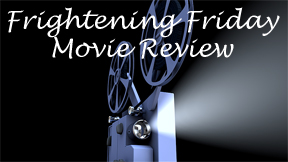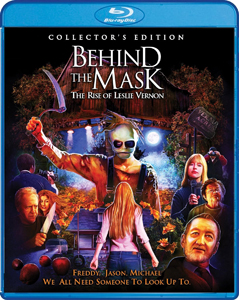“Scream” (1996) is the most influential film in horror history because it not only reignited the dormant slasher genre to the point that it’s now been going strong for nearly three decades, but also because it sparked a new subgenre – the meta slasher movie. (“Wes Craven’s New Nightmare” came out two years earlier, but wasn’t as good, nor as popular.)
By the mid-Teens, we were getting things like “Final Girl” and “The Final Girls” and that Geico commercial where the victims-to-be hide behind the chainsaws. And now it’s rare to see a straight slasher movie; almost all of them have some sort of commentary.
Cutting only skin deep
Coming out 10 years after “Scream,” “Behind the Mask: The Rise of Leslie Vernon” (2006) is more winking than what came before, but not as clever as what would come later. Viewed today, we can see it’s an important part of the slasher parody subgenre’s continuum. But as a piece of entertainment, it’s on the flat side.

“Behind the Mask: The Rise of Leslie Vernon” (2006)
Director: Scott Glosserman
Writers: Scott Glosserman, David J. Stieve
Stars: Nathan Baesel, Angela Goethals, Scott Wilson
Director/co-writer Scott Glosserman blends “The Blair Witch Project’s” handheld style with the meta nature of “Scream.” A documentary crew led by on-screen talent Taylor (“I’ve seen her somewhere before” character actor Angela Goethals) is invited to chronicle the behind-the-scenes plans of the titular serial killer (Nathan Baesel).
Vernon is like a B-list Patrick Bateman as he cogently explains the rules of the slasher game from the killer’s POV. His actions are like Jason Voorhees’ (indeed, this film’s climactic barn setting calls to mind “Friday the 13th Part V: A New Beginning”) except that he has a fully functioning brain.
The problem with “Behind the Mask” is that while slasher icons’ behavior can be codified – targeting a virgin, but murdering the people around her first to get some suspense going – the behavior doesn’t have any grounded reasoning behind it in human psychology or metaphorical meaning.
Vernon tells Taylor to just go with it when she questions the inconsistency of killers punishing both the sexually promiscuous and the virgin. Grilling him further won’t reveal any deeper meaning, Vernon says. So Glosserman’s observations about slashers are only skin deep; he doesn’t cut further like some later films would.
Satire blunts any scares
As a piece of entertainment, his instincts are right, at least. Just when the documentary footage has taken us as far as it can go, “Behind the Mask” switches over to being a traditional slasher film (a few scenes before this had hinted at the switch to come; perhaps they shouldn’t have).

Seeing the cliches play out is refreshing after hearing Vernon talk about the cliches to come. It’s also rather flat and of course totally lacking in genuine tension, as we are safely ensconced in satire by this point. The film needed second and third layers of commentary about genre cliches, but it doesn’t have any more tricks up its sleeve.
The overall production is a mix of amateur (the bland credit style) and professional. Glosserman gets several horror legends to participate – like Freddy Krueger actor Robert Englund; Scott Wilson, later of “The Walking Dead”; and “Poltergeist’s” Zelda Rubinstein.
While not a stupid movie, it’s weirdly off-tone in a few instances. Notably, everyone refers to the trope of the Survivor Girl, but it was long established that the common term is Final Girl. I get a sense that Glosserman and co-writer David J. Stieve aren’t as immersed in the genre as, say, Kevin Williamson.
While “Behind the Mask” is easily better than the median example of the type of film it’s parodying (“Friday the 13th Part V” being a good placeholder), it’s likewise not everything it could be. It’s an accurate observation of slashers more so than a revelatory satire.

